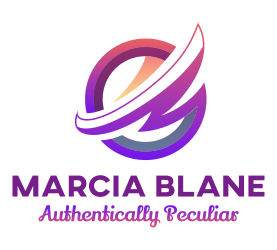Understanding Trauma & Your Body | The Connection Between Mind, Emotions, and Healing
Trauma is more than just a memory—it lives in the body, nervous system, and subconscious mind, influencing how we react to stress, relationships, and even physical health. Many people don’t realize that unhealed trauma can manifest as chronic pain, anxiety, or even be passed down through generations, affecting how we think, feel, and behave.
Have you ever wondered why you respond a certain way to stress or conflict? Have you been told you act like a family member you’ve never met? That’s because trauma is more than an experience—it is energy that transfers through thoughts, actions, and physical engagement.
How Trauma Affects the Body
Research in neuroscience and psychology confirms that trauma is not just an emotional wound—it is a physiological response that gets stored in the body. This happens in several ways:
✅ The Brain & Nervous System – Trauma activates the fight, flight, freeze, or fawn response, keeping the body in a heightened state of stress long after the event has passed.
✅ Muscle Memory & Chronic Pain – The body holds tension, often leading to muscle stiffness, headaches, digestive issues, and autoimmune conditions.
✅ Behavioral Patterns – Unresolved trauma can shape our beliefs, habits, and reactions, leading to self-sabotaging behaviors, difficulty trusting others, or emotional shutdowns.
Recognizing Trauma’s Impact on Your Life
Healing from trauma begins with self-awareness. Ask yourself:
Do I overreact to certain situations without understanding why?
Am I holding onto unresolved pain that affects my decisions?
Do I struggle with anxiety, hypervigilance, or feeling emotionally numb?
Do I repeat unhealthy relationship patterns?
Your trauma does not define you, but acknowledging its impact is the first step toward healing and reclaiming your life.
Steps to Begin Your Healing Journey
Healing from trauma is a process, and while it takes time, intentional effort can help you regain emotional balance, mental clarity, and physical well-being.
1. Identify Who You Are in Your Trauma
Many people become emotionally stuck in their trauma, shaping their identity around it. Ask yourself: Am I living as a victim of my past, or am I choosing to become a victor over it? Recognizing this can shift how you approach healing.
2. Release the Need to Protect Those Who Hurt You
Holding onto the guilt, shame, or responsibility for your violator’s actions only prolongs the pain. It is not your job to carry their burden—your job is to prioritize your own healing and well-being.
3. Set Boundaries & Reclaim Your Power
You have the right to disconnect from those who caused you harm. Trauma does not require you to maintain relationships that continue to trigger or diminish your healing process. Boundaries are an act of self-preservation, not selfishness.
4. Embrace Forgiveness for Your Own Freedom
Forgiveness is often misunderstood—it’s not about excusing what happened. Instead, forgiveness severs the emotional tie between you and your trauma, allowing you to move forward without being weighed down by the past.
5. Choose Healing Over Survival Mode
If you’ve lived in trauma for years, healing may feel foreign or uncomfortable at first. But choosing to operate from a healed lens can:
✔ Reduce physical symptoms associated with stress and trauma.
✔ Enhance emotional regulation and reduce anxiety.
✔ Help you build healthier relationships that are based on trust and mutual respect.
Final Thoughts: Your Trauma is Not Your Identity
Healing is not about erasing the past—it’s about reclaiming your power and choosing to live beyond it. You deserve a life filled with peace, self-awareness, and emotional freedom.
"You are your greatest asset—choose healing, embrace growth, and reclaim your life."

